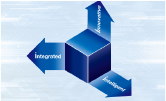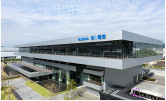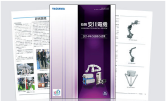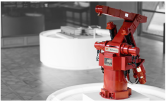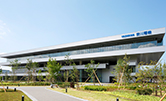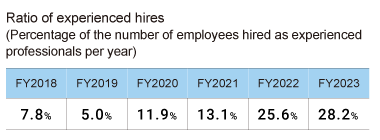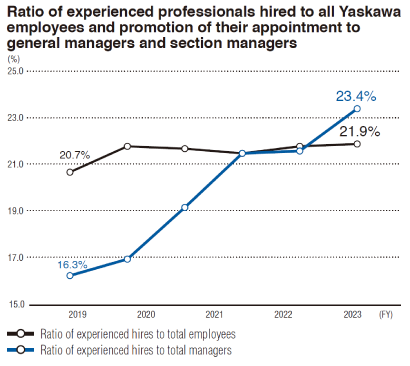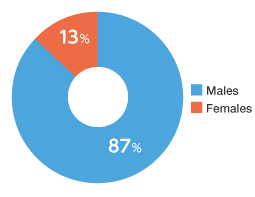Diversity & inclusion
Diversity & inclusion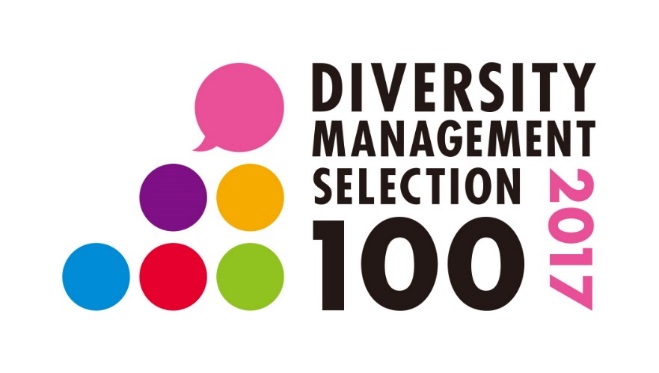
In Vision 2025, our long-term business plan, we set a target of diversity promotion (diversity in our human resources) and are making efforts to create a culture where we can leverage the strengths of diverse human resources. Aiming to advance the company and strengthen its competitiveness in order to respond to a rapidly changing global market promptly, we have positioned the three following items as our mission in promoting diversity in our human resources:
- 1. To construct a corporate constitution strong against environmental changes by adopting and fostering human resources with diverse values and ways of thinking.
- 2. To incorporate diverse opinions and viewpoints to create a corporate culture where innovation arises as a matter of course.
- 3. To realize a satisfying working environment by eliminating all factors of discrimination and respecting the individuality of employees.
|
Initiatives to promote human resource diversity
In order to respond quickly to changes in the business environment surrounding the VUCA* era, Yaskawa aims to evolve and enhance its competitiveness as a company that will continue to grow for the next 100 years, and strives to create a climate that creates new innovations by leveraging the strengths of diverse human resources, regardless of their job titles, gender, nationality, tenure, educational background, work structure, or lifestyle.
The promotion of work-life balance through workstyle reform is key for promoting diversity and also, we position that balance as being indispensable for corporate development and are initiating it positively. We have created an environment in which we can increase productivity and achieve results by offering flexible working options regardless of location or time through the use of flexible working hours or taking accumulated holidays by unit of hours, as well as the use of the telework system, which was expanded throughout the company from fiscal 2021.
To support life events, we held a roundtable discussion with managers and worked to establish a system for those taking parental leave to prevent career losses (leaving work or slowdowns in career development) in childbirth and childcare. In addition, with the amendment of the Child Care and Family Care Leave Act, we have created an environment in which it is easier than ever for both men and women who wish to take parental leave, such as the new system of childbirth leave for fathers.
* An acronym for Volatility Uncertainty Complexity Ambiguity. A condition in which the future is uncertain and difficult to predict.
Promoting gender diversity in Japan
In Yaskawa Group as a whole, women account for about 13% of managerial positions (FY2023). However, as a technology-oriented manufacturer, Yaskawa Electric (nonconsolidated) has a problem with a low ratio of female managers as a result of the high number of technology-oriented employees and the low ratio of female science students.
In addition, the results of our most recent in-house questionnaire showed that while the percentage of female employees who want to pursue managerial positions has improved, there is a gap between men and women in opportunities and their willingness to do difficult jobs or jobs in new fields.
Based on these findings, we are conducting not only skill upgrading and mind-changing for female employees, but also training programs for potential female managers where managers change their attitudes and strengthen their involvement in developing female employees. In addition, in FY2023, we conducted e-learning training on diversity for all employees, including awareness of unconscious bias.
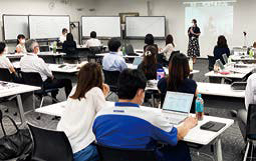
Training for women’s career advancement

*1 Percentage of respondents who answered that their workplace has a climate in which they can utilize the strengths of diverse human resources

*2 Percentage of respondents who answered that work in new areas or more challenging work are offered fairly according to individual motivation, ability, and environment, regardless of gender
*3 Percentage of respondents who answered that they want to pursue new areas or more challenging work
Status of Progress on Action Plan Based on the Act on Promotion of Women’s Participation and Advancement in the Workplace
Based on the policies of “Realize25”, the mid-term management plan for fiscal 2023 to fiscal 2025, and the sustainability policy, we have formulated an action plan that is more effective.
Our company faces challenges such as a lack of progress in promoting women to managerial positions compared to the industry average, and the existence of a gender gap (bias) in internal opinion surveys. To overcome these challenges, we will work to promote women to managerial positions and further strengthen diversity and inclusion (D & I) activities to steadily promote the advancement of women.
While OJL is the main training center, we are also actively engaged in expanding employees’ horizons and perspectives and building networks through external exchanges and collaboration projects with other companies.
Recruitment of experienced professionals
In order to secure the personnel necessary to realize our management strategy, we actively recruit professionals with experience in each field. The ratio of experienced hires to total hires is increasing year by year. We actively provide them with challenging opportunities, so that they can be selected and promoted to general managers and section managers depending on their contribution and roles.
Initiatives for employees with disabilities
We aim to create a workplace environment in which all employees with disabilities are able to grow their abilities and work together in harmony, respecting each other’s personalities and individuality, without being separated by the presence or absence of disabilities.
In 2020, a “Handbook for accepting employees with disabilities” was created to summarize the key points for smooth acceptance of employees with disabilities by the workplace, and is distributed internally through the “website for employment of persons with disabilities”.
Consolidated and group-wide status
At Yaskawa Group, we are promoting the localization of our overseas operations based on the basic concept of management that considers operations on a global scale and operates locally. Currently, foreign employees account for about half of all consolidated employees, and human resources of various nationalities are active at each site. Also, more than 40% of managers in the Yaskawa Group are local personnel working overseas. In Yaskawa Group as a whole, women make up about 20% of employees.
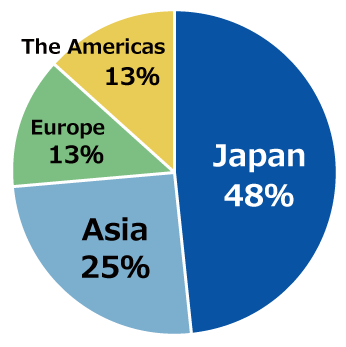
Employees by Region (As of February 29, 2024)
Initiatives for LGBTs
We believe that we need to have the right knowledge and understanding to ensure that false knowledge, understanding and assumptions do not harm LGBTQ parties or hinder their exercise of abilities.
As a first step, we conducted employee awareness surveys in fiscal 2018 and 2019, and 96% of respondents positively responded to a question asking if they understood that prejudice and incomprehensible behavior against LGBT are human rights issues.
Data by gender for full-time employees of Yaskawa Electric
Yaskawa Electric is proud to have built a work environment where the average age and average number of years in service are no different between male and female staff, and women are able to continue to work while raising children. However, female leaders are still few in number: 14 (general) managers and 57 assistant managers. We will continue to provide career support in line with the Action Plan for the Advancement of Women.
Gender ratios in new hires (FY2023 results only for new graduates)
|
Total |
| Females |
13 (16.2%) |
| Males |
67 (83.8%) |
| Total |
80 (100.0%) |
Difference in average number of years of employment for males and females (As of February 29, 2024)
| |
Number of full-time employees |
Average Age |
Average years of engagement |
| Females |
406 |
40.9 |
16.1 |
| Males |
2,783 |
42.3 |
19.0 |
| Total |
3,189 |
42.1 |
18.6 |
-
| Percentage of Woman |
| 12.7% |
-
Average number of overtime hours worked by employees per month (FY2023)
| |
Overtime hours |
| Females |
12.2 |
| Males |
20.9 |
| Total |
19.6 |
*Excluding employees subject to the discretionary labor system, such as managers, etc.
Ratio of female employees in management positions (As of February 29, 2024)
| |
Managerial position |
Ratio |
Assistant manager |
Ratio |
| Females |
14 |
2.4% |
57 |
5.9% |
| Males |
568 |
97.6% |
905 |
94.1% |
| Total |
582 |
100.0% |
962 |
100.0% |
*Figures for managerial position include section chief or higher.
Ratio of promotions to department or section chief (average for the three most recent business years)
| |
Ratio of those promoted |
| Females |
25.0% |
| Males |
9.1% |
Ratio of parental leave taken by breakdown of males and females (FY2023)
|
Ratio of employees who took parental leave |
| Females |
100.0% |
| Males |
56.6% |
Ratio of paternity leave taken by employees (FY2023)
| |
Ratio of male employees
who took leave on childbirth |
| Males |
78.9% |
*At Yaskawa, employees are entitled to a paternity leave (five days when the spouse is giving birth to a child) in addition to parental leave.
Ratio of paid holidays taken by employees (FY2023)
|
Paid leave provided |
Paid leave taken |
Utilization rate of paid leave |
| Total |
20 days/person |
15.4 days/person |
76.9% |
*The figures above do not apply to company officers, part-time employees or contractors, elder or senior staff, or dispatched workers.
Status pertaining to diverse career paths (total for the three most recent business years)
| |
Measures |
People |
Past
3 years |
Employment of temporary staff as regular employee (Females) |
0 |
| Reemployment (Reemployment as a regular employee, excluding reemployment after retirement age) |
1 |
| Mid-Career employment of women aged 30 or older |
22 |
 Region
Region



 Principles & vision
Principles & vision
 Procurement
Procurement
 Sustainability for the Yaskawa Group
Sustainability for the Yaskawa Group
 Customer satisfaction
Customer satisfaction
 Supply chain
Supply chain
 Social contribution
Social contribution
 Compliance & risk management
Compliance & risk management



